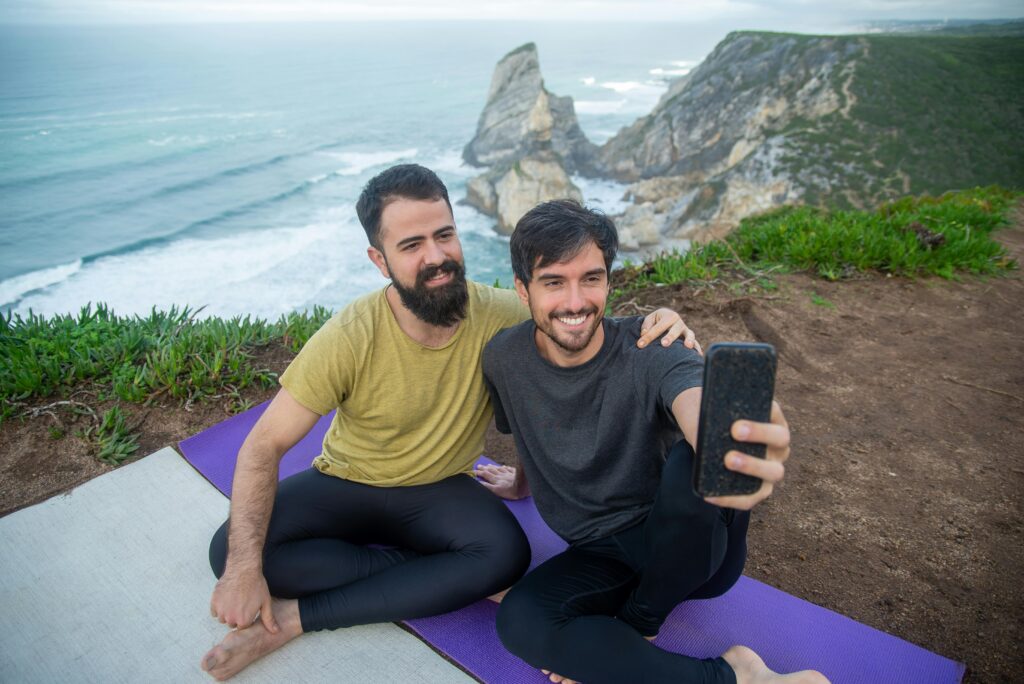Introduction
Jet lag, delayed flights, unfamiliar surroundings, language barriers—the joys of travel often come with their own set of stressors. Mindfulness while traveling offers a powerful antidote: the ability to stay present, savor new experiences, and reduce travel-related anxiety. Yet carving out mindful moments on the go can sometimes feel like an extra chore—especially when you’re racing to catch connections or meet tight itineraries. In this post, we’ll explore both the uplifting and challenging sides of practicing mindfulness on the road, share real-life traveler stories, offer practical techniques, and answer your most pressing questions.
1. Why Travel Needs Mindfulness

- Sensory Overload: New sights, sounds, and smells bombard your senses—overwhelming your mental bandwidth.
- Unpredictability: From lost luggage to sudden weather changes, travel throws curveballs that can spike stress levels.
- Time Pressure: Tight schedules and the fear of “missing out” (FOMO) push you into constant motion rather than presence.
Positive Aspect: Mindfulness grounds you in the moment, helping you truly enjoy a sunset in Bali or the aroma of street food in Marrakech.
Negative Aspect: When every minute feels precious, pausing to breathe can feel like wasted time.
2. The Upside: Transforming Your Travel Experience
2.1 Deeper Cultural Connection

- Example: Anna, a solo backpacker in Japan, spent five minutes mindfully sipping matcha in a Kyoto teahouse—observing the steam, the taste layers, and the ceremony. She returned home with vivid memories that no rushed photo ever captured.
2.2 Reduced Anxiety and Jet Lag
- Practices like mindful breathing and body scans before bed can regulate your nervous system, helping you fall asleep faster in unfamiliar hotels.
2.3 Enhanced Safety and Awareness
- When hiking in remote areas or navigating busy streets, mindfulness heightens your situational awareness—reducing the risk of missteps or accidents.
Upside: You return from trips feeling rejuvenated and enriched rather than exhausted and frazzled.
3. The Downside: When Mindfulness Feels Like an Extra Task
3.1 Added Pressure
- Tracking “Am I meditating enough?” can create guilt trips—ironically adding to stress instead of relieving it.
3.2 Logistical Challenges
- Finding a quiet, clean spot for traditional meditation isn’t always possible in crowded hostels or airport lounges.
3.3 Emotional Surfacing
- Being fully present can sometimes bring up homesickness or travel anxieties you’d rather avoid in a foreign land.
Real-Life Slip-Up: Marco tried a 20-minute guided meditation in his cramped hostel bunk in Barcelona. Between snoring roommates and light leaks, he grew frustrated, abandoned the practice, and felt more agitated than before.
4. Practical Mindfulness Techniques On the Go
4.1 The Carry-On Breath (30 Seconds)
- How to Do It: Pause wherever you are—airport line, city square, hostel dorm—and take three slow, deliberate breaths, focusing only on the air entering and leaving your nostrils.
- Why It Works: A mini reset that fits into any tight schedule.
4.2 Sensory Scan for Arrival Ritual (2 Minutes)
- How to Do It: Upon arriving at a new destination, sit for two minutes and mentally note:
- Five things you see
- Four things you hear
- Three things you feel (temperature, textures)
- Two things you smell
- One thing you taste (even a stray sip of water)
- Why It Works: Quickly acclimates you to a new environment while anchoring your awareness.
4.3 Walking Meditation Through Historic Streets

- How to Do It: Instead of rushing between landmarks, walk slowly. With each step, notice the sensation in your feet, the rhythm of your stride, and the architecture around you.
- Why It Works: Turns sightseeing into a meditative practice.
4.4 Mindful Eating of Local Cuisine
- How to Do It: Before the first bite, spend ten seconds observing your dish—colors, textures, aromas. Chew slowly, savoring each mouthful.
- Why It Works: Deepens culinary experiences and can prevent overeating in buffets or feast-style meals.
4.5 Micro-Meditations in Transit
- How to Do It: On trains or flights, close your eyes (when safe), and practice a guided body scan: start at your toes and mentally “scan” up to your head, releasing tension as you go.
- Why It Works: Utilizes otherwise idle time to reset stress levels.
You Can also read blog of mindfulness for healthcare proffesionals.
5. Integrating Mindfulness into Your Travel Itinerary
- Schedule Intentional Pauses: Block 5–10 minutes in your itinerary solely for mindfulness—label it “Unplug & Breathe” rather than “Meditation.”
- Use Travel Cues: Every time you hear an airport announcement or exit a taxi, take one mindful breath.
- Pack a Reminder: A lightweight token—like a small stone or a fabric bookmark—serves as a touchstone for practice.
- Buddy System: Travel companions can remind each other to pause, share a breathing exercise, or even do a quick walking meditation together.
Example: On a group tour of the Amalfi Coast, Sara and her friends agreed to pause for a two-minute mindful ocean-gaze at every beach stop—resulting in deeper relaxation and richer memories.
You can also read blog of parenting with peace.
6. Real-Life Traveler Stories
- Solo Backpacker’s Glow: Ravi, traveling India solo, found that starting each day with a two-minute sunrise meditation on his hostel rooftop set a tone of calm curiosity—leading him to discover hidden temples and make genuine connections with locals.
- Family Road Trip Harmony: The Patel family introduced a “mindful snack stop” every two hours, where each person shared one thing they noticed mindfully—helping siblings stay engaged and reducing bickering.
You can also read more blogs on mindfulness while travelling by mindful.org
Q&A Section
- Q: How can I practice mindfulness if I’m constantly on the move?
A: Use micro-practices like the Carry-On Breath—three deep inhales and exhales anywhere, anytime. - Q: What if I feel self-conscious meditating in public?
A: Mindfulness doesn’t require closed eyes or specific postures. Even a brief moment of inward focus—while standing or walking—counts. - Q: Can mindfulness help with travel sickness?
A: Yes—focusing on steady breathing and grounding sensations (like feet on the floor) can soothe queasy stomachs. - Q: How do I maintain a mindfulness habit after returning home?
A: Anchor post-travel rituals—like journaling your trip highlights—to a brief mindfulness practice, keeping the momentum alive. - Q: Are guided meditations better for travelers?
A: They can be helpful if you have internet access or downloaded audio—but even simple self-guided breaths or scans work effectively offline.
FAQ Section
- Do I need special equipment to practice mindfulness on the road?
No—your own breath and awareness are all you need. A small travel journal can help, but isn’t mandatory. - How long should each travel mindfulness session be?
Aim for 30 seconds to 5 minutes depending on your schedule. Consistency matters more than duration. - Can mindfulness help me deal with travel delays?
Yes—pausing to notice frustration or anxiety without judgment helps you cope calmly and make clearer decisions. - Will mindfulness make me miss out on attractions?
Quite the opposite: by fully engaging with each moment, you often notice hidden gems that rush prevents you from seeing. - Is it okay to do group mindfulness exercises with travel companions?
Absolutely—shared practices can deepen bonds, create inside jokes, and make your trip more memorable.
You can also read more important mindfulness blogs.
Friendly Closing Message
Practicing mindfulness while traveling isn’t about slowing down your journey; it’s about enriching every step of the way. From micro-breaths in airport lounges to sensory scans at sunrise, these simple practices help you savor new cultures, manage unexpected hiccups, and return home with more than just photos—return with clarity, calm, and invaluable memories. So on your next adventure, try one of the techniques above. Notice how a few mindful moments transform stress into wonder, and routine into discovery. Safe travels—and may every mindful breath guide you to delightful surprises! 🌍🧳🧘♀️

Pingback: Mindfulness for Teachers: How It Sparks Classroom Calm (Yet Sometimes Feels Like Extra Work) - Calm Within Minutes
Pingback: Mindfulness for Caregivers: How It Sustains Your Compassion (But Can Sometimes Heighten Your Own Stress) - Calm Within Minutes